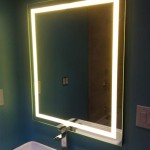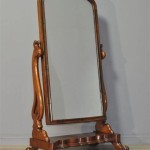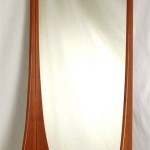Mirror Tiles for Ceilings: A Guide to Transformative Interior Design
Mirror tiles, a versatile and captivating design element, have become increasingly popular for ceiling applications. Their ability to reflect light and create an illusion of space has made them a sought-after choice for both residential and commercial interiors. This comprehensive guide will delve into the world of mirror tiles, exploring their features, benefits, and considerations for their effective implementation in your space.
The Allure of Mirrored Ceilings
Mirror tiles offer a unique approach to interior design, transcending the limitations of conventional materials. Their ability to bounce light around a room creates a sense of spaciousness and brightness, making smaller rooms feel larger and more inviting. The reflective surface also adds a touch of glamour and sophistication, transforming any space into an elegant and captivating setting.
Mirrored ceilings are particularly effective in rooms with limited natural light. By reflecting existing light, they can illuminate even dark corners and create a more balanced and vibrant atmosphere. In contrast to traditional white ceilings, which absorb light, mirrored ceilings amplify light sources, enhancing the overall brightness of the room.
Types of Mirror Tiles
Mirror tiles are available in a wide range of styles and materials, providing ample opportunities for customization and personalization. Here are some common types:
Acrylic Mirror Tiles: These tiles are lightweight and shatter-resistant, making them ideal for high-traffic areas or spaces where safety is a priority. They offer a slightly less reflective surface compared to glass tiles.
Glass Mirror Tiles: Glass mirror tiles provide a classic and highly reflective finish. They come in various sizes and shapes, allowing for intricate patterns and designs. However, they are more susceptible to breakage than acrylic tiles.
Beveled Mirror Tiles: Beveled mirror tiles feature a polished edge that adds depth and dimension to the ceiling. They are typically made of glass and create a strikingly elegant effect.
Textured Mirror Tiles: Textured mirror tiles offer a unique twist on the traditional mirrored surface. They may feature patterns, designs, or subtle textures that break up the reflectivity and add visual interest.
Considerations for Installing Mirror Tiles
Before embarking on your mirrored ceiling project, it's essential to consider several factors to ensure a seamless and successful installation.
Surface Preparation: The ceiling substrate needs to be smooth and even to ensure proper adhesion of the tiles. Any unevenness or imperfections will be amplified by the reflective surface.
Lighting: Carefully consider the placement of light sources to avoid glare and create a balanced illumination. Strategically placed spotlights or ambient lighting can enhance the effect of the mirrored ceiling.
Professional Installation: Installing mirror tiles on the ceiling requires specialized skills and attention to detail. It's advisable to hire a professional installer who has experience working with this type of material.
Conclusion
Mirror tiles offer a transformative approach to interior design, adding a touch of elegance, spaciousness, and brightness to any room. By selecting the right type of tiles, considering the surface preparation and lighting, and employing professional installation techniques, you can create a breathtaking and captivating ceiling that will be the focal point of your space.

Mirror Ceiling Tile 1800ceiling

Mirror Tile Silver

Strong Mirror Ceiling Tiles For High End Reflective Isc

Strong Mirror Ceiling Tiles For High End Reflective Isc

Decorative Mirror Tiles On The Ceiling Accent Wall Decor Interior Design Bedroom

Glassless Mirror Ceiling Tiles Lite Mirrors

Mirror Ceiling Tile For Sensory Rhino

Glassless Mirror Ceiling Tiles Lite Mirrors

Aluminum Framed Mirror Drop Ceiling Tiles 3 D Texture Indoor

Glassless Mirror Ceiling Panel From Rose Brand








